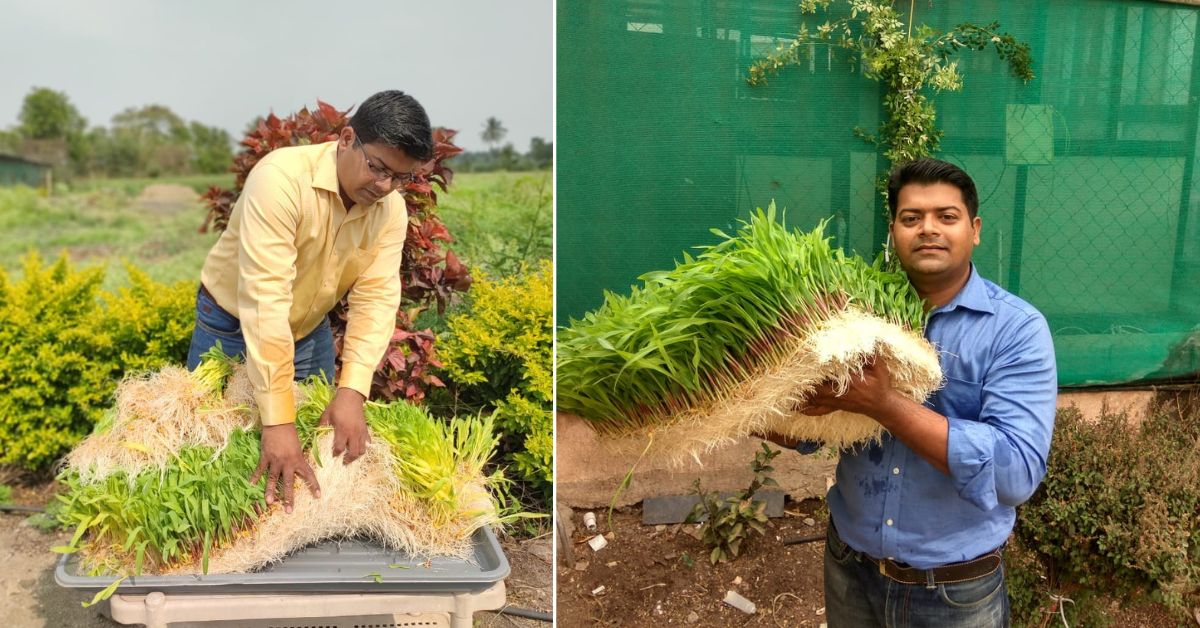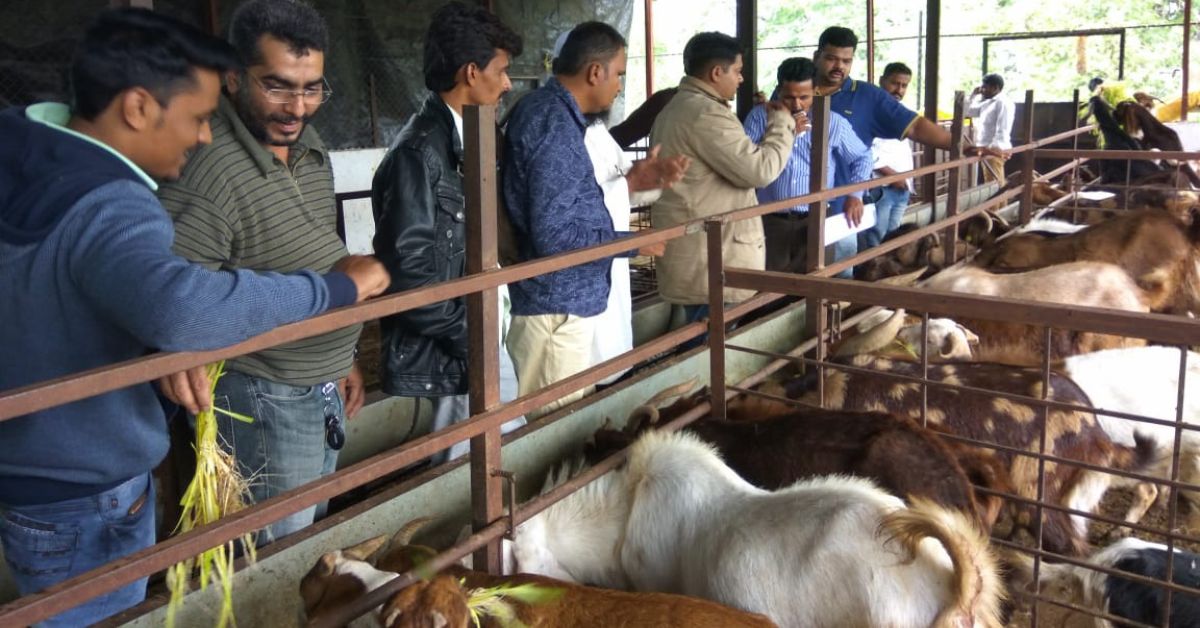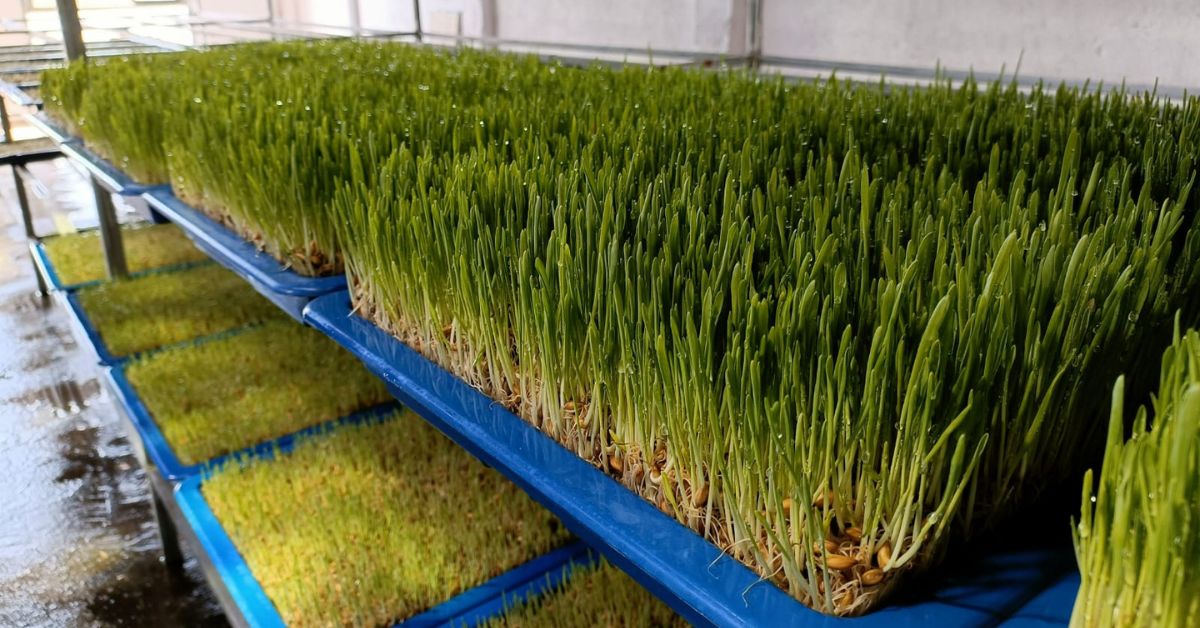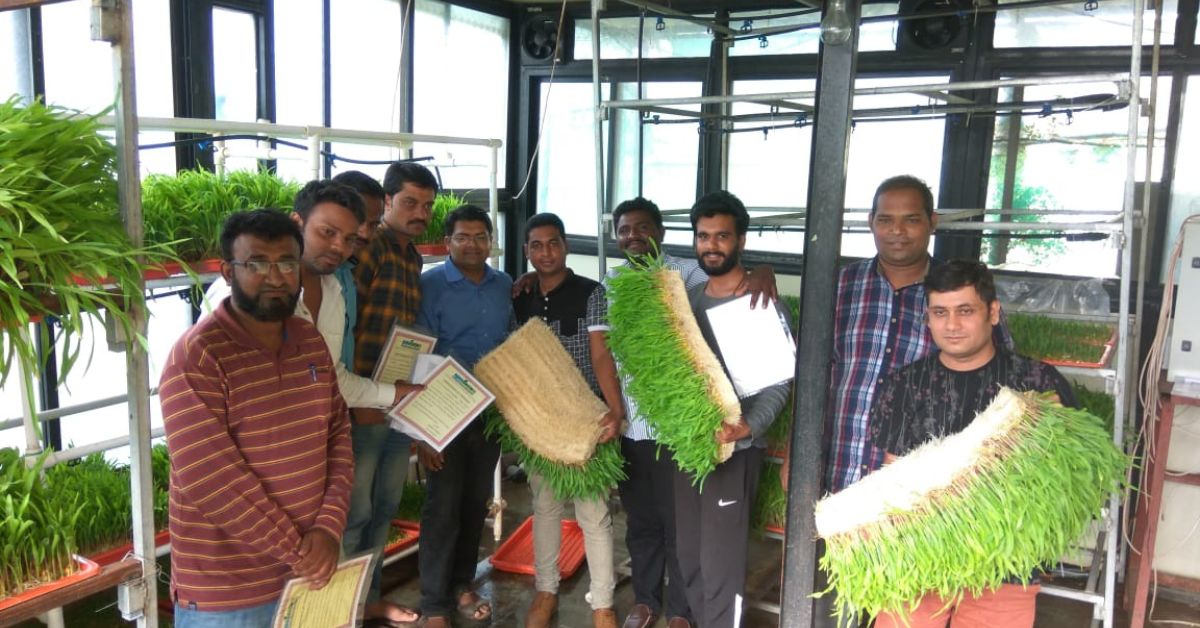During his time as a sales engineer in Dubai, Ashwin Sawant met a client who was cultivating green fodder hydroponically for his large livestock, consisting of over 2,000 animals. This farm left such an impression on him that he chose to leave his lucrative job.
“I had never seen such an impressive setup before, so I started frequenting the client. Observing their work helped me gain the confidence to replicate something similar. Lately, I had not been happy with my work in Dubai and was looking for a reason to come back home,” the 38-year-old Mumbai resident tells The Better India.
Considering hydroponics to be his calling, he returned to his grandparent’s village in Pune in 2011. “The concept of hydroponics was very new back then. People would find it hard even to pronounce it — some would term it hydrophobic and ‘hydrolonic’,” he smiles.

Without any farming background, Ashwin started to grow green fodder on the 500 sq ft of land in Pune. Today, he harvests 500 kilos of green fodder daily to feed the 105 cows and goats on his farm. He also set up a research lab ‘Scientific Hydroponics’ to introduce farmers to the benefits of hydroponics farming.
Changing the game for Indian farmers
Ashwin points out that Indian farmers lack access to green fodder because it requires large tracts of land and gallons of water. “In states like Haryana, Maharashtra, Jharkhand, Odisha, and Tamil Nadu, farmers already lack sufficient water for irrigation. If a farmer owns 800 cows, they have to reserve 60 acres of land to grow green fodder. That means they cannot grow any other crop on this land, which is not economical,” he says.
“But with hydroponics, we can reduce the area and water requirements. With a one-tonne unit that can be installed in a 1,000-sq ft area, a farmer can save at least seven acres of land. This land can be utilised to grow other crops. Using hydroponics, farmers can harvest one kilo of green fodder by utilising just 1.5 litres of water while saving 99 percent of the water required conventionally,” he adds.

Other than this, the cost of green fodder is an added woe. “If a farmer does not have enough land to grow green fodder on their own, they are forced to purchase expensive fodder from the market. The green fodder grown using traditional methods costs Rs 8–14 per kg whereas that grown hydroponically costs Rs 2 per kg,” he informs.
Despite its benefits of conserving land and water, the main drawback of the hydroponic technique was its expensive cost. Aswhin says a one-tonne unit costs up to Rs 16 lakh. “These setups require air conditioners, ozonators, and UV and RO systems. This increases the cost of the unit. I wanted to reduce its price so that many farmers can adopt it,” he says.
After multiple trials and errors, Ashwin developed a low-cost economical model that cost Rs 3 lakh on average. This model could be replicated across various geographies in the country. Ashwin worked on vital parameters like temperature and humidity required to promote the growth of green fodder.
To regulate temperature, he replaced air conditioners with his ‘fan-and-pad’ based cooling system that uses exhaust fans to pull air through cooling pads, which then evaporate water to cool the air.
“In summer, the temperature shoots up to 42 degrees Celsius. To grow fodder like maize, you require a temperature of 28–30 degrees Celsius; whereas for wheat or barley, the temperature should be 20-24 degrees Celsius. This fan-and-pad system reduces the temperature to up to 20 degrees Celsius. It is designed like a cooler but works like an AC,” he explains.

Using ‘fan-and-pad’ cooling systems, dehumidifiers to maintain humidity levels, inverters, and stabilisers, Ashwin customises an optimal hydroponics infrastructure based on the region’s climatic conditions.
Reaping the benefits of pioneering hydroponics in the region
In the past 15 years, Ashwin has trained more than 8,000 farmers and entrepreneurs to adopt hydroponic farming techniques. He charges Rs 12,000 for a two-day onsite workshop and a year-long handholding.
“First, we train them. Next, we customise a unit design for them, and when they implement it, we keep a close watch on their work every day through video calls,” he says.
For instance, Pinak Suryavanshi (24) who hails from Maharashtra’s Sangli district, switched to hydroponics farming last year with Ashwin’s assistance. “I live in a region where we face intense water scarcity. In a situation like this, we had to waste an uncalculated amount of water to grow green fodder on a large land. But with hydroponics, we are able to get 500 kilos of fodder daily by using 500 litres of water,” he tells The Better India.

Pinak, who grows maize fodder to feed 10 buffaloes and 1,200 hens, says it cost him Rs 1.25 lakh to set up the system.
Besides training people on setting up hydroponic fodder systems, Ashwin also offers consultation and installation services across India and in countries like Oman, Qatar, and Saudi Arabia. With this, he has been able to clock Rs 2 crore in revenue last year. This year, he projects an income boost to Rs 10 crore.
“When I came back to Mumbai, my family was shocked at my decision to quit my job, where my salary package was worth Rs 25 lakh per annum. For eight years between 2011 and 2019, I hardly earned any income from my hydroponics venture. Moreover, I invested Rs 25 lakh — some from my savings and the rest loaned from my family members. It is only in the past four years that I started earning a profit from this work. But I enjoyed the work that I put in throughout these years,” he says.
“It is extremely satisfying to see that today, people in India are as fascinated by hydroponics as I was back then,” Ashwin shares.
Edited by Pranita Bhat; All photos: Ashwin Sawant.
No comments:
Post a Comment